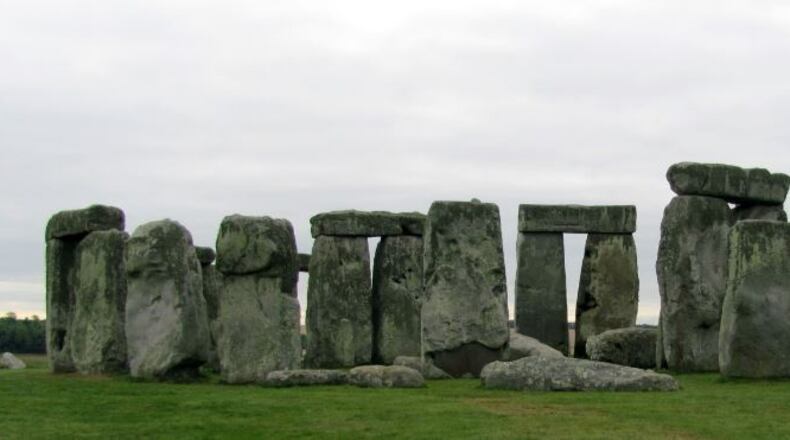RELATED: Stafford: Anthropologist remembers Springfield colleague
Nick Card, the manager of the Orkney Research Center for Archaeology, will tell that story when his national speaking tour, “Secrets of the Ness of Brodgar,” stops at the Springfield Society of the Archaeological Institute of America.
The free lecture is set for 7 p.m. Wednesday in Room 105 of the Shouvlin Center at Wittenberg University.
The Ness of Brodgar, which dates to at least 3,300 B.C.E. – and possibly earlier –has become the central focus of research in what has been designated as “The Heart of Neolithic Orkney,” the North Sea island chain that shares a latitude with Canada’s Hudson Bay.
Unexplored until about 15 years ago, the roughly 6-acre Ness is “unlike any other site we’ve seen in Britain (in) the scale of what we’ve got there, the quality of the architecture,” Card said in a cell phone interview.
Like Stonehenge, it is thought to be a ceremonial site, but the dig includes at least 14 monumental stone buildings in a complex Card says is more akin to the archaeological dig of a Middle Eastern village.
DETAILS: Springfield tied to the mother of modern CSI work
In addition to several large ceremonial buildings, the site has several areas that seem to have housed people and featured built-in cooking hearths to feed those gathered for what is assumed to be pilgrimages to the site.
Over the course of a dozen seasons of digging, much has been learned.
“This huge mound we are in the midst of the archaeology which we’ve thought of as being a natural formation, turns out to be artificial,” Card said, meaning it was-man made and part of a sophisticated engineering plan at work on the entire site.
Sorting out all of what is on the site has been complicated by the discovery that the buildings and grounds may have been built and rebuilt over a period of 1,500 years.
“It seems to have spanned the whole Neolithic period,” Card said, “and reflects a changing, dynamic social system, not a stagnant one as is often envisaged.”
Current digs, he added, may be “the tip of the iceberg.” If continued digging reveals even earlier settlements, it may indicate this far northern site predates sites in the south of England. That could lead to reconsideration of whether Neolithic Britain developed south to north, as has been assumed, or north to south. That, in turn, could change the understanding of where Stonehenge and the Ness of Brodgar fit into Neolithic history.
“Every year (of digging) throws up something new,” Card said.
One discovery involved what seems to have been a ritual slaughter of several hundred cattle and fewer deer in what’s known as Building 10, when it apparently was decommissioned towards the end of the Ness’s active life.
The use of decorative paints at the site is the first known in stone-age Britain. The use of stone shingle is another unique feature.
Just how the builders moved the huge stones, particularly for the structural parts of the buildings at the Ness remains a mystery, as it does at Stonehenge. So does the awe over the sophisticated nature of the communities that had enough excess time, resources and engineering prowess to build such structures with stone tools.
Card says the discoveries at Neolithic Orkney have not only excited Orcadians, but spawned a new community of researchers, archaeological tourists and others who feel drawn to the islands’ ancient days.
“The Ness relies more and more on public funding and the support of individuals,” he said, and it is “a difficult balancing act” to make it all work, one reason for his speaking tour.
A key reason Springfielders are going to find out more about the Ness is that a Springfielder has family roots that may extend to Neolithic Orkney.
The Tofts, an abandoned stone house on Rousay, an island that can be seen from the Ness of Brodgar, is an ancestral home of Lynne Linn, a member of the Springfield Chapter of the AIA, the wife of Chapter President Gary Linn and an avid genealogist.
In 2005, the Linns visited that house knowing it had been home to relatives who had been Earls in both Scotland and Orkney, the slaying of one of whom is marked by a monument called a “murder stone” that sits beside a golf course on one of the Shetland Islands.
As excited as she was to visit an ancestral home that has been standing since before the year 1000, Mrs. Linn may be more excited about the family connection she now feels with ancients whose thriving society built an astonishing complex on a North Sea island 4,000 years earlier than that.
After all, it has the ring of myth and legend.
About the Author
